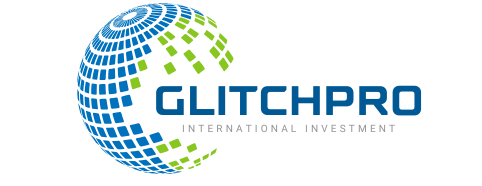“The Gig Economy and Personal Finance: Retirement Plans for Freelancers”
Do you spend most of your time being self-employed, a freelancer, or a gig worker? If yes, then it is likely that you have not yet made retirement plans. Don’t worry, you are not alone in your struggle. Without a 401k or pension plan from an employer, it is indeed difficult to save for the future, but it is also important to note that the gig economy isn’t going anywhere, and neither should your retirement dreams.
In this guide, we will provide you with actionable steps that will allow you to save for retirement despite having an irregular income. Hence, we will avoid complicated math and finance language, and instead provide you with simple steps that can help you achieve a brighter future.

Table of Contents
- Why Retirement Planning is Different for Freelancers
- Retirement Plan Options for Freelancers
- SEP IRA
- Solo 401(k)
- Roth IRA
- Traditional IRA
- Health Savings Account (HSA)
- Taxable Brokerage Accounts
- How to Choose the Right Retirement Plan
- Saving Strategies for Irregular Income
- Common Mistakes Freelancers Make
- FAQs About Freelancer Retirement Plans
- Step-by-Step Guide to Getting Started
- Final Tips to Stay on Track
1. Why Retirement Planning is Different for Freelancers
Freelancers face unique challenges:
- No Employer Benefits: No company match or automatic payroll deductions.
- Irregular Income: The feast or famine approach to earning makes saving difficult.
- Self-Employment Taxes: You pay the employer and employee side of Social Security/Medicare (15.3%).
The good news is that freelancers have access to self-employed retirement accounts that allow for greater contributions than traditional 401(k)s. A Solo 401(k) plan, for example, allows you to save up to £66,000 in 2023 (if you earn enough).
2. Retirement Plan Options for Freelancers
SEP IRA (Simplified Employee Pension)
- How It Works: You may contribute up to 25 percent of your net self-employment earnings, up to a maximum of £66,000 in 2023.
- Pros: Easiest to establish among all other plans, high contribution limits, tax deductible.
- Cons: No Roth option; contributions only consist of the employer side.
- Best For: Freelance employees with a high income and no staff.
Solo 401(k)
- How It Works: Combines employee and employer contributions. Max £66,000 in 2023 (£22,500 employee plus 25 percent of income and employer contributions).
- Pros: Preferred advantage of higher limits than SEP IRA and the availability of a Roth option.
- Cons: More paperwork; must file Form 5500 if assets exceed £250,000.
- Best For: Those who want flexibility, freelancers with greater savings.
Roth IRA
- How It Works: Contributing post-tax money (max £6,500 in 2023) allows withdrawals tax-free in retirement.
- Pros: Tax-free growth; RMDs are not required.
- Cons: There are income limits (For example, £153,000 for single filers in 2023).
- Best For: Freelancers anticipating being in a higher tax bracket later.
Traditional IRA
- How It Works: Contributions are made with pre-tax money, a maximum of £6,500 in 2023, with taxes paid at the time of withdrawal.
- Pros: You can now take a tax deduction.
- Cons: Lower contribution limit; RMDs apply after age 73.
- Best For: people that want immediate tax benefits.
Health Savings Account (HSA)
- How It Works: Set aside pre-tax pounds for medical expenditures that can be invested and used for retirement.
- Pros: Triple tax benefits (tax-deductible contributions, tax-free growth, tax-free withdrawals for medical costs).
- Cons: Requires a high-deductible health plan (HDHP).
- Best For: Freelancers with an HDHP.
Taxable Brokerage Accounts
- How It Works: Invest in stocks, bonds, or ETFs without adhering to retirement account regulations.
- Pros: There are no contribution limits; money can be accessed at any time.
- Cons: There are no tax advantages.
- Best For: People looking to supplement other retirement accounts.
3. How to Choose the Right Retirement Plan
Consider the following:
- How much do I earn?
- For high earners: Prioritize SEP IRA or Solo 401(k).
- For moderate earners: Start with a Roth IRA and a taxable account.
- Would I prefer a tax incentive now or in the future?
- Now: SEP IRA, Traditional IRA or HSA
- Later: Roth IRA.
- How about employees?
- If yes, SEP IRA also has mandatory contributions for employees.
4. Saving Tactics for Irregular Income
- Pay Yourself First: Set 10 to 20% of each paycheck toward retirement on autopilot.
- The “Feast and Famine” Method: Save aggressively to put away during lean months.
- Quarterly Contributions: Treat retirement savings like a tax bill—set aside money every three months.
5. Common Mistakes Freelancers Make
- Not Putting Money Aside for Emergencies: Focus on retirement after creating 3-6 month emergency funds.
- Overcomplicating Investment Options: Simplify things and start with low-cost index funds such as Vanguard S&P 500 ETF.
- Neglecting their taxes: Use tax-advantaged accounts to lessen the taxation received from the tax authorities.
6. FAQs About Freelancer Retirement Plans
Q: What if I earn too little to max out a SEP IRA?
A: Do what you can. £100 a month will grow over time due to compound interest.
Q: Can I have a Solo 401(k) and a Roth IRA?
A: Absolutely. They are separate accounts with separate limits.
Q: What happens if I don’t set aside money for retirement?
A: The rest of your fund will be solely from Social Security, which in 2023 would be about £1,800/month.
7. Step-by-Step Guide to Getting Started
- Establish a Retirement Account: Choose where to open it (Vanguard, Fidelity, or another institution) and determine what type of account to set up (e.g., SEP IRA).
- Set up a direct transfer from your bank: Create an account and arrange for automatic transfers to ensure a steady flow into your retirement account.
- Invest in a Simple Manner: Opt for a target-date fund or an ETF that tracks the S&P 500.
- Adjust Contributions with Income Change: Review investments every three months and adjust for increases or decreases in income.
8. Final Tips to Stay on Track
- Always prepay your retirement savings and treat it as an expense. It is essential that savings accounts should also be paid in advance.
- Get Help if You Need It: Automated, algorithm-driven services with little to no human supervision like Betterment can be of help. Alternatively, hire a financial planner who works on a fee-only basis.
- Celebrate Milestones: Once a target is met, and say, £10k has been saved, treat yourself (responsibly, of course).
Final Thoughts
The most important thing is to set aside small amounts and remain committed to saving, especially if utilizing tax-advantaged funds, called SEPs, IRAs, or Solo 401(k)s. Keep in mind that retirement savings do not need to be in lump sums, so saving small amounts like pounds incrementally over time augments total retirement savings along with reducing expenses in later years.
Open a retirement account this week, as accomplishing this is easier than creating an invoice for a client.
Freelancers and Uber drivers are relatable examples provided within the article alongside their explanations to enhance engagement for targets with no background in finance or high-level jargon.
It’s designed to tackle the most prominent concerns gig workers have. This is ideal for readers who are intimidated by retirement planning.
